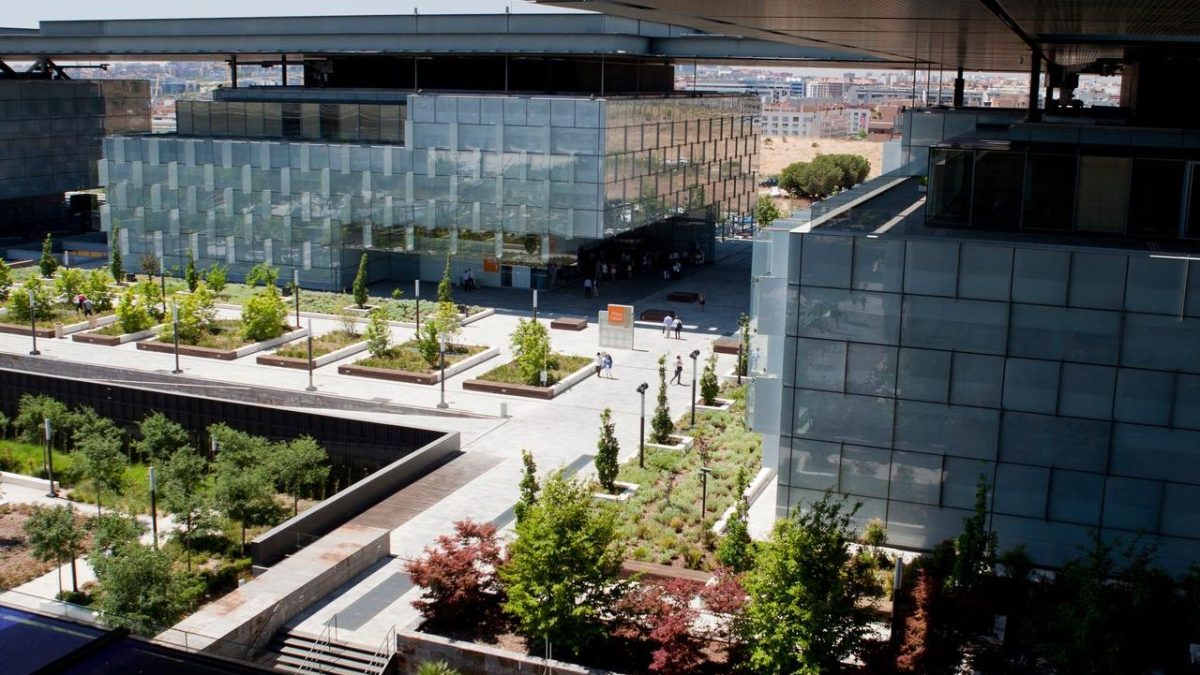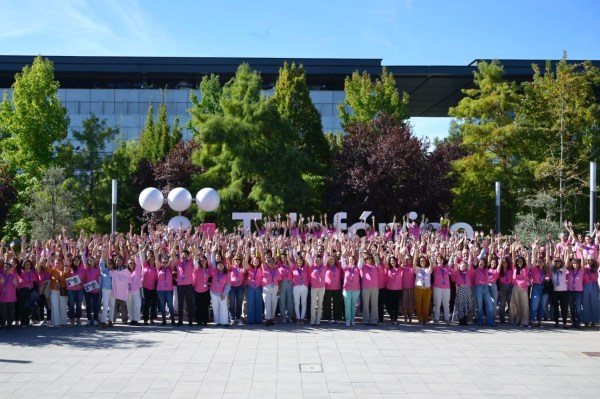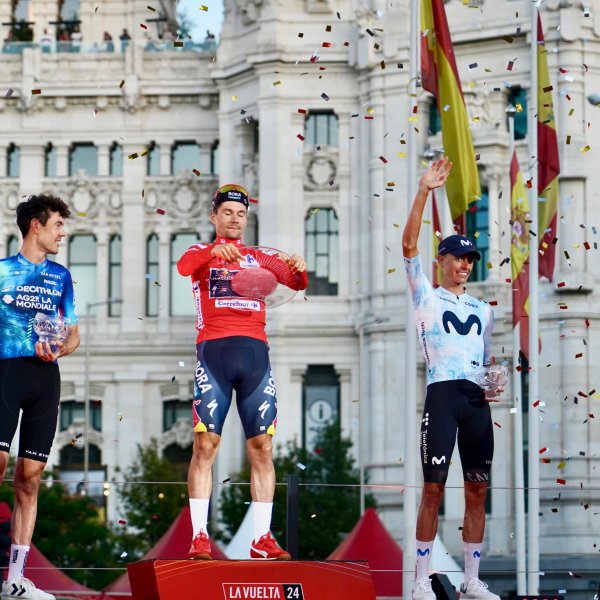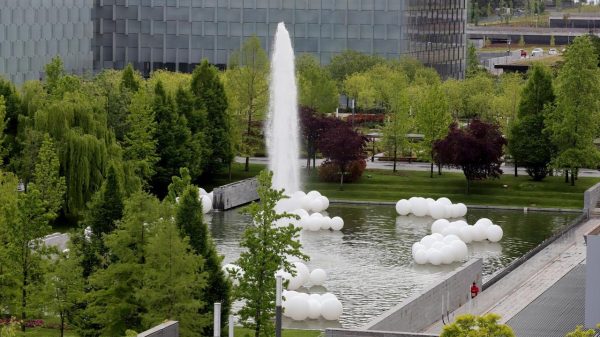Some of us are very lucky, we work at Telefónica, in Madrid and in a privileged location. We started our visits to the different gardens in the central area of the pond between the North and West squares.
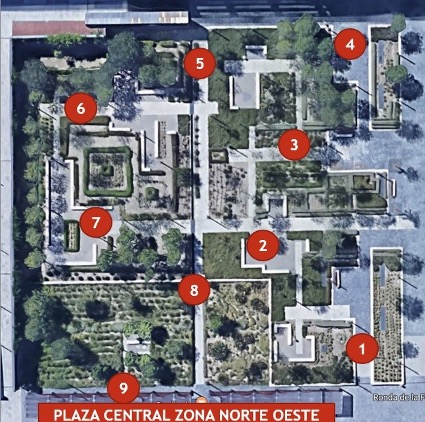
We start the walk and are greeted on the right by a large area of rose bushes (Rosa sp.), several hackberry trees (Celtis australis), with a small area of Olivilla (Teucrium fruticans) at the end.
We turn left to reach the first small square where we can see large areas of Cotoneaster (Cotoneaster horizontalis), Olivilla (Teucrium fruticans) and Lavender (Lavandula officinalis).
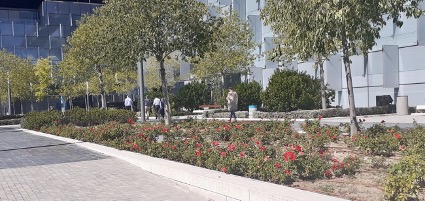
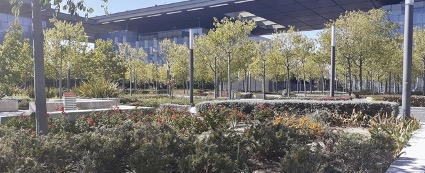
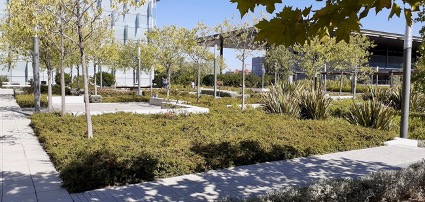
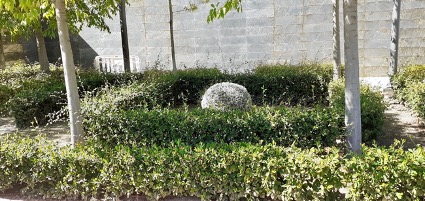
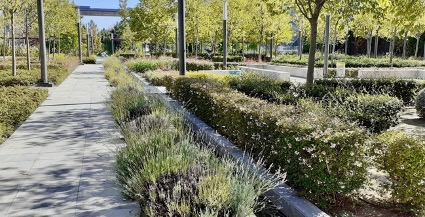
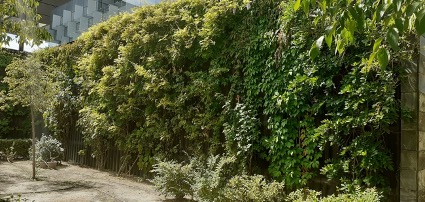
We continue walking in a northerly direction and turn right again to find repeated areas of Cotoneaster (Cotoneaster horizontalis) and Olivilla (Teucrium fruticans) but this time mixed with Rosemary (Rosmarinus officinalis), Rose (Rosa sp.) and Photinia “Red Robin” (Photinia x fraseri).
We go back out into the corridor and turn left where we can see, in an area parallel to the North 3 building, several specimens of hackberry (Celtis australis), Olivilla (Teucrium fruticans), Rosemary (Rosmarinus officinalis) and several wild daisies.
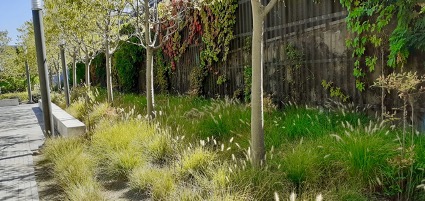
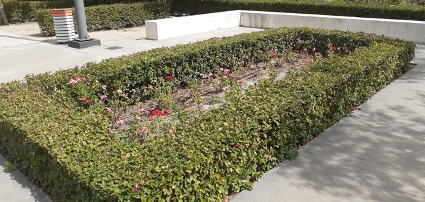
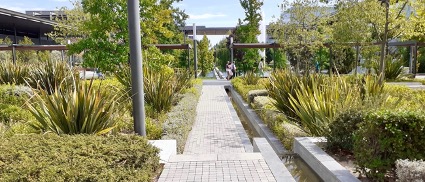
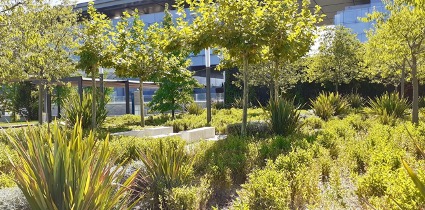
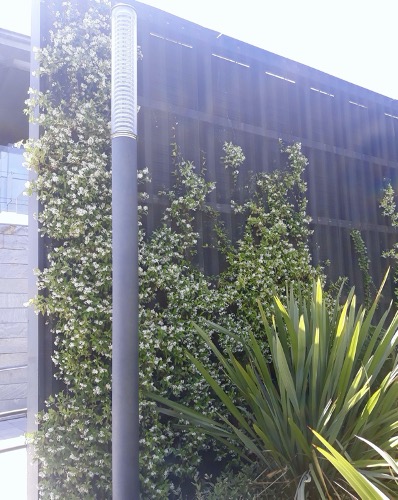
We reach the end and leaving an area of American Juniper (Juniperus horizontalis) on our left we take our steps towards the stairs leading up to the west square. Just before going up the stairs we follow the corridor parallel to the water channel where on the left we have Cotoneaster (Cotoneaster horizontalis) and on the right a large area of Lavender (Lavandula officinalis). Turn right at the first fork and you will see a geometric hedgerow composed of Olivilla (Teucrium fruticans), Fotinia “Red Robin” (Photinia x fraseri), Durillo (Viburnum tinus) and at the end Lavender (Lavandula officinalis).
Arriving at the wall we can see on the right a large area of Rosemary (Rosmarinus officinalis) and in front of it a large area of Foxtail (Pennisetum sp.) with Sacred Bamboo (Nandina domesica). On the wall can be seen Ivy (Hedera helix), Roses (Rosa sp.), Wisteria (Wisteria sinensis).
When we reach the next small square we see an area of Durillo (Viburnum tinus) protecting a Rose bush (Rosa spp.). We continue onwards and on the right we find a Shade plane tree (Platanus hybrida) and a common iris (Iris germanica).
We reach the water channel again. Turn right to follow it on the way to the pond and just before going down some steps you can see Olivilla (Teucrium fruticans) and Roses (Rosa sp.) on the right and Cotoneaster (Cotoneaster horizontalis) on the left.
Once down the steps to the right we can see a large area of dwarf bamboo (Pleioblastus spp.), in which New Zealand flax (Phormiun tenax), some Liquidambar (Liquidambar styraciflua) and several specimens of Almez (Celtis australis) stand out. No, let’s not get tired as there is one last pleasant olfactory experience left on this zigzagging second route. If we go out into the central corridor and take the direction of the ramp that goes up to the West square, before we can start to climb it, we will be hit by a pleasant aroma during the flowering season. It is an area of Jasmine (Jasminum officinale f.grandiflorum) next to the wall.

